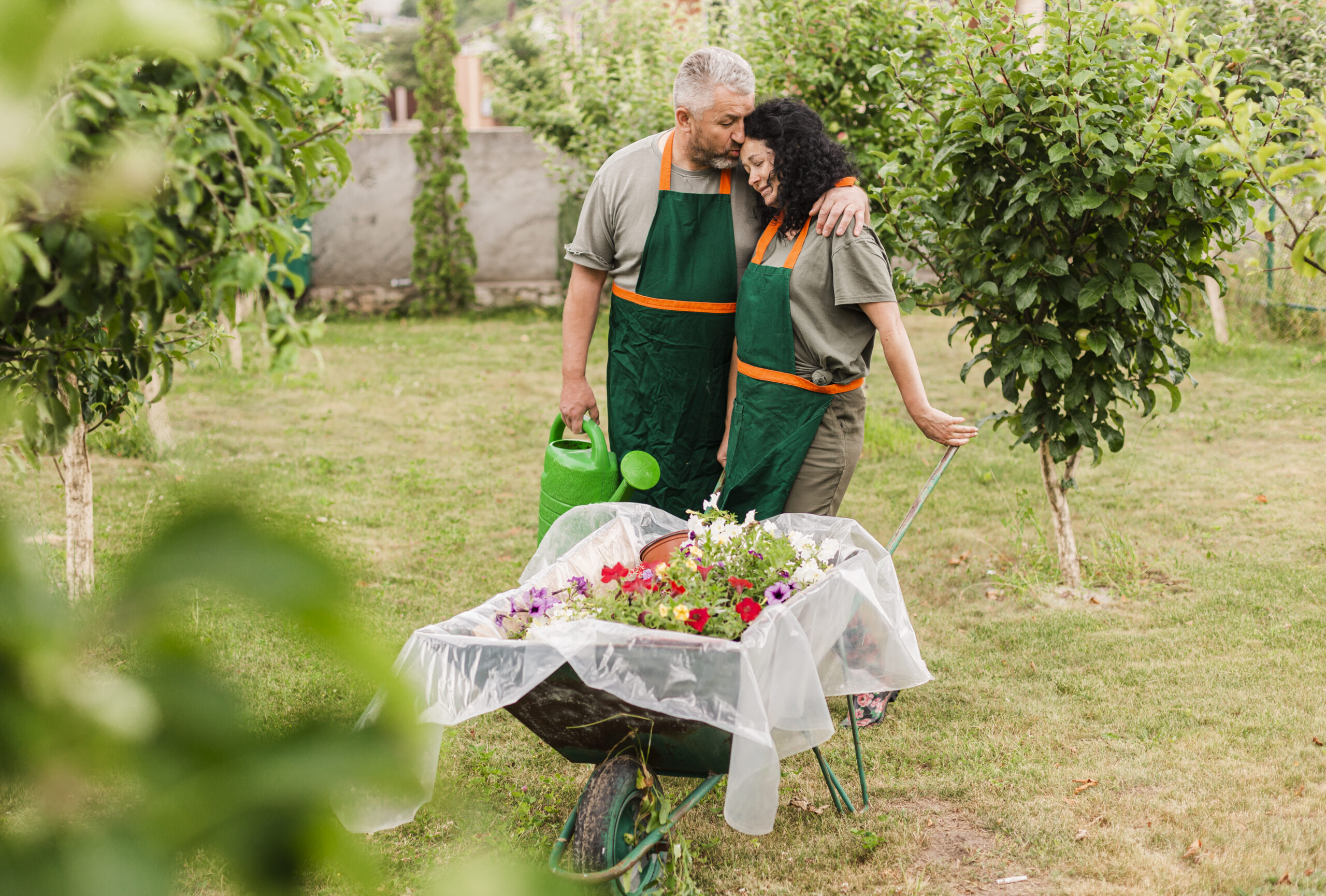Você pode já ter percebido que a rega é fundamental para a saúde das plantas, mas descobrir a frequência e a quantidade ideais de água pode ser um desafio. Regar em excesso pode sufocar as raízes e causar apodrecimento, enquanto regar de menos pode levar à desidratação e enfraquecer a planta.
Each plant has specific humidity needs, influenced by factors such as soil type, climate and season. Some prefer constantly moist soil, while others do best when the soil dries out a little between waterings.
In this guide, we’ll explore the importance of proper watering, understand how to determine the ideal amount of water for different types of plants, and best practices for keeping your plants efficiently hydrated. Continue reading!
The importance of adequate watering for plant health
Proper watering is vital for plant development, ensuring that they receive the ideal amount of water to grow healthy and vigorous. Water is essential for vital processes such as photosynthesis, nutrient transport and maintenance of cellular structure.
However, both excess and lack of it can compromise the health of the vegetation. Waterlogging of the soil can harm the oxygenation of the roots, favoring the emergence of fungi and bacteria that cause rot – while a lack of it can result in dehydration of the plant, leading to its death.
Furthermore, adequate watering contributes to the thermal regulation of plants. On hot days, water evaporation helps cool plant tissues, preventing thermal stress and minimizing damage caused by excessive heat.
INGood irrigation planning not only brings benefits to their health, but also to water savings and environmental sustainability. Methods such as drip irrigation or watering at appropriate times help to avoid waste and ensure that water is absorbed efficiently.
How often should I water the plants?
To determine ideal watering frequency, we need to analyze factors such as the type of plant, the climate and the characteristics of the soil. This is because some species – such as succulents and cacti – need little water, while tropical plants need constant humidity.
The climate also has a great influence on the frequency of watering: in hot and dry periods, water evaporation occurs more quickly, requiring more frequent watering. In winter or on rainy days, soil moisture can remain high for longer, which reduces the need for irrigation.
Another important factor is the type of soil where the plant is grown. Sandy soils drain water quickly, requiring more frequent watering, while clayey soils retain moisture longer, requiring less watering.
Furthermore, the plant’s growth phase can change its water need. Therefore, observing the signs that the plant gives, such as withered or dry leaves, is also important to adjust the watering frequency according to its specific needs.
Determining the water needs of each plant
Each plant has a specific need for water, which varies according to its species, the environment in which it is located and its stage of growth. For example, cacti and succulents, adapted to dry climates, need little water, while tropical plants, such as ferns, require more humidity to develop.
A simple way to know a plant’s water need is to check the soil moisture. If the soil is dry to a depth of about two inches, this is usually the ideal time to water. Furthermore, visible signs on plants, such as wilted, yellowed or fallen leaves, can indicate either a lack or excess of water.
The environment also plays an important role in plants’ water demand. Plants grown in pots tend to dry out more quickly than those planted directly in the ground, as containers limit moisture retention.
Another important factor is the plant’s stage of development. Young seedlings and plants in the flowering or fruiting stage generally require more water to sustain growth, while mature, established plants can tolerate longer periods without watering.
Practices for watering different types of plants
Each type of plant requires specific care when it comes to watering. Succulents, for example, originate from arid regions and store water in their leaves and stems. Tropical plants, such as orchids, require more humidity and benefit from regular watering, as well as spraying to simulate the humid environment of forests.
In the case of vegetables and fruit plants, watering must be balanced, ensuring that the soil remains moist, but not waterlogged. Many of these plants have shallow roots, which makes them more sensitive to lack of water. The ideal is to water them in the morning or late afternoon, avoiding rapid evaporation of water under the strong sun.
Indoor plants have varied needs, depending on the species and the environment in which they are located. In places with air conditioning or heating, for example, the soil may dry out faster, requiring frequent watering. Furthermore, the type of pot used also influences moisture retention.
An efficient practice is to choose the appropriate watering method for each type of plant. Drip irrigation, for example, is ideal for vegetable gardens and larger gardens, as it delivers water directly to the roots, without waste. The use of watering cans or sprayers is best suited for small and delicate plants.
Conclusion
Watering plants properly is one of the most important measures to ensure healthy and long-lasting growth. Knowing how often and how much water to apply avoids problems such as root rot due to excess water or dehydration caused by lack of irrigation.
In addition to observing the signs that the plants show, it is important to adapt watering according to the climate, the type of soil and the stage of development of each plant. Methods such as drip irrigation, the use of mulch and choosing the ideal time to water help optimize water use and maintain adequate humidity for the crop.
By following the correct guidelines, you not only contribute to the well-being of plants, but also to the more sustainable use of water. With attention and small adjustments to the irrigation routine, anyone can keep a garden, vegetable garden or set of indoor plants healthy.




